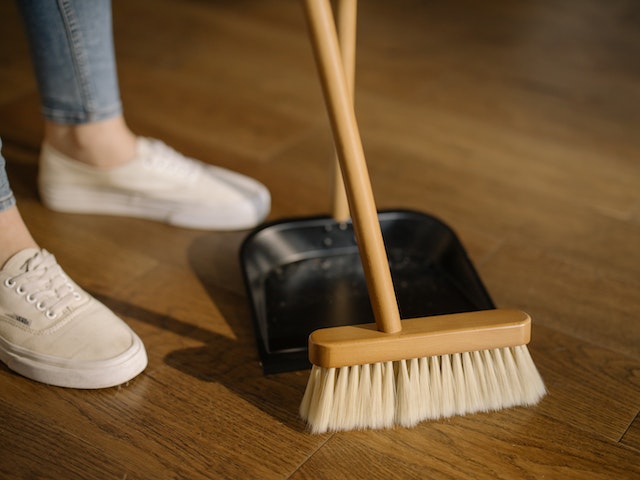2.27.23
Why Your Home Gets Dusty


Consumers home loans
We’d love to help you with a mortgage or home equity line of credit.
Learn more.Plus, tips for eliminating sources of dust and cleaning so you don’t just move dust around your home.
As daylight hours grow longer, you aren’t alone if you’ve noticed more dust in your home. You might be wondering, why is my house so dusty? Here’s a look at what generates dust, how to mitigate those sources, and how to really clean dust instead of just moving it around.
Identify sources of dust
If you have forced air heat, it’s likely that dust is moving through your HVAC system. Regularly change the HVAC filter, which traps dust before it can settle in your rooms.
When replacing the HVAC filter you might be tempted to get the cheapest one. However, thicker filters that cost more are often more effective at trapping dust. Buy filters in bulk to keep costs down.
Pets are another source of dust. As they shed fur and dander it settles around your home. Brushing your furry friends will trap fur before it gets deposited on your home’s surfaces. Vacuum at least weekly to keep pet-generated dust to a minimum.
Check your dryer vent’s duct connection. Even a slight gap can allow dust not captured by the lint trap to move about your home.
Houseplants can both collect dust and generate dust. Gently remove dust from smooth leaf surfaces by gently using a microfiber cloth. Small plants can be rinsed in the kitchen sink. If your plant leaves have a “hairy” or fuzzy surface, water could damage the leaves; use a soft bristled brush to remove dust – ideally outdoors where the dust won’t resettle in your home.
Houseplant soil can be a source of dust when watering or if kids or pets disturb dry soil. A layer of decorative pebbles can keep dust down, create a moisture barrier to slow water evaporation and enhance your décor.
How to clean dust effectively
Effective cleaning means trapping and removing dust, not just moving it around and letting it settle again.
Work from the top down. If your home is more than one story, start at the highest level. In each room, start at the ceiling and finish with the floors.
First, remove the bulk of dust with a vacuum cleaner, using the hose and dust brush tool. Working from the top down within each room, vacuum places often overlooked, like the top surfaces of ceiling fan blades, walls and heating vents. Vacuum upholstered furniture, too.
Next, use a wet method to remove the finer dust that remains after vacuuming from surfaces. Many surfaces can be safely cleaned with a solution of three parts vinegar to one part water. A microfiber cloth that traps fine particles will work better than rags.
Do you dread the idea of cleaning dust?
While some folks enjoy the satisfaction of seeing dust cleaned away, others dread the idea of vacuuming and surface cleaning. If you’re in the latter group, consider setting up a savings account designated for cleaning services.
Consumers helps more than 2,000 members finance land, first and second homes, and home improvement projects each year. We’d love to help you with a mortgage or home equity line of credit; contact us online or call us at 800-991-2221.
![]()

Consumers home loans
We’d love to help you with a mortgage or home equity line of credit.
Learn more.

